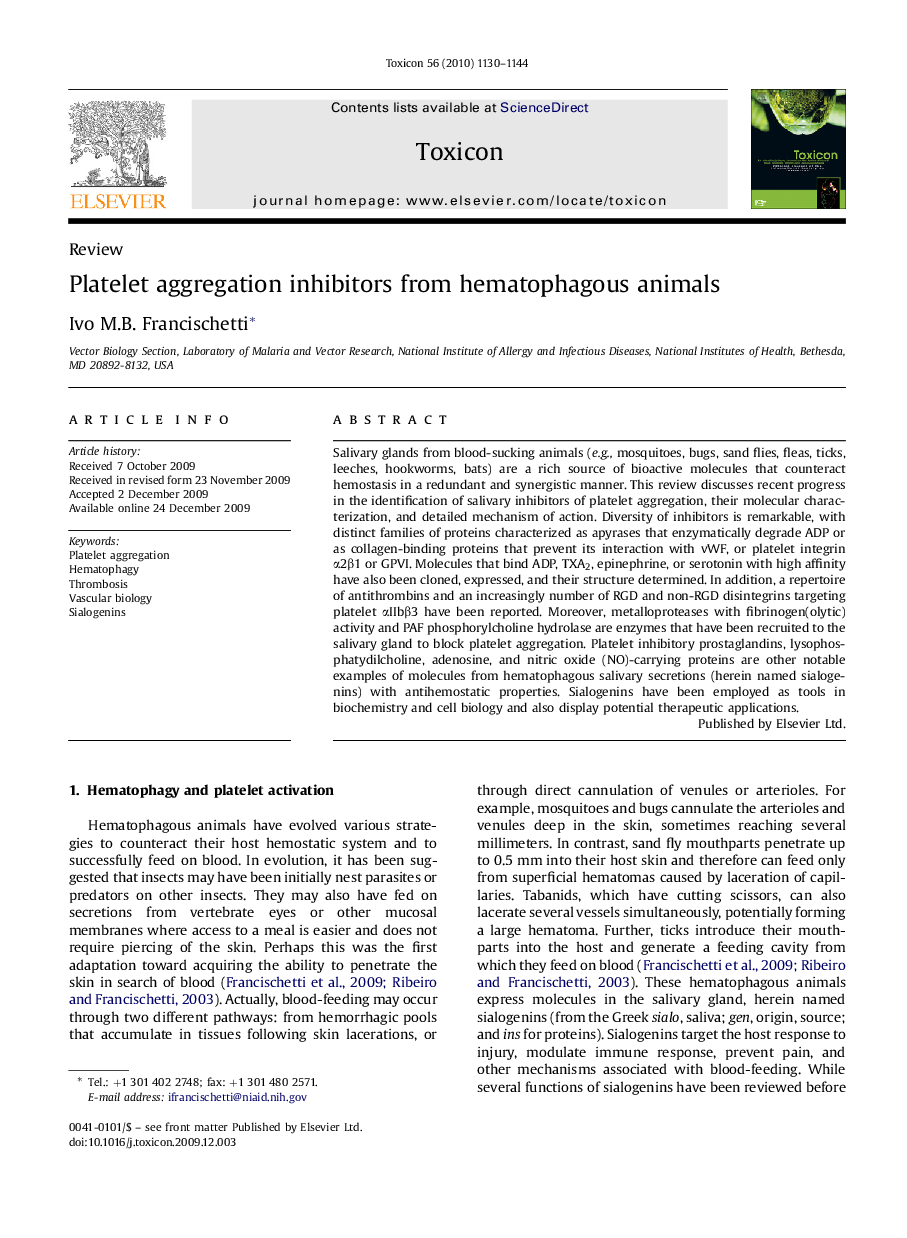| کد مقاله | کد نشریه | سال انتشار | مقاله انگلیسی | نسخه تمام متن |
|---|---|---|---|---|
| 2066351 | 1077043 | 2010 | 15 صفحه PDF | دانلود رایگان |

Salivary glands from blood-sucking animals (e.g., mosquitoes, bugs, sand flies, fleas, ticks, leeches, hookworms, bats) are a rich source of bioactive molecules that counteract hemostasis in a redundant and synergistic manner. This review discusses recent progress in the identification of salivary inhibitors of platelet aggregation, their molecular characterization, and detailed mechanism of action. Diversity of inhibitors is remarkable, with distinct families of proteins characterized as apyrases that enzymatically degrade ADP or as collagen-binding proteins that prevent its interaction with vWF, or platelet integrin α2β1 or GPVI. Molecules that bind ADP, TXA2, epinephrine, or serotonin with high affinity have also been cloned, expressed, and their structure determined. In addition, a repertoire of antithrombins and an increasingly number of RGD and non-RGD disintegrins targeting platelet αIIbβ3 have been reported. Moreover, metalloproteases with fibrinogen(olytic) activity and PAF phosphorylcholine hydrolase are enzymes that have been recruited to the salivary gland to block platelet aggregation. Platelet inhibitory prostaglandins, lysophosphatydilcholine, adenosine, and nitric oxide (NO)-carrying proteins are other notable examples of molecules from hematophagous salivary secretions (herein named sialogenins) with antihemostatic properties. Sialogenins have been employed as tools in biochemistry and cell biology and also display potential therapeutic applications.
Journal: Toxicon - Volume 56, Issue 7, 15 December 2010, Pages 1130–1144